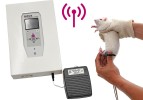Authors
l Hai-jie, K Seong-jian, L Cai-na, W Qing, L Xiao, L Cui-cui, M Chao, W Shao-ling
Lab
Department of Rehabilitation, Sun Yat-sen Memorial Hospital of Sun Yat-sen University, Guangzhou 510120, Guangdong Province, China
Journal
Chinese Journal of Tissue Engineering Research
Abstract
OBJECTIVE: To investigate the effect of exercise on the extracellular matrix production in a rat model of intervertebral disc degeneration.
METHODS: A rat model of intervertebral disc degeneration was prepared by FreundÕs complete adjuvant injection into the intervertebral disc at L5-6 levels. Then, the model rats were allowed to have a rest for 2 weeks. All rats were then randomly divided into exercise and control groups. Rats in the exercise group were forced to run every day, while the controls allowed free activities in the cage. The behavioral tests were performed at 7, 14, 28, 42, 56 and 70 days after modeling; meanwhile, the intervertebral disc samples were collected used for alcian blue staining and immunohistochemical staining to detect the levels of proteoglycan, aggrecan and collagen type II in the intervertebral disc cells, respectively.
RESULTS AND CONCLUSION: Vocalization threshold on the rat back of punctured disc was significantly decreased, while grooming and wet-dog shaking were significantly increased at 7 days after modeling compared with the baseline Ê(P < 0.05), suggesting that FreundÕs complete adjuvant injection successfully induces disc degeneration, hyperalgesia and abnormal behav OBJECTIVE: To investigate the effect of exercise on the extracellular matrix production in a rat model of intervertebral disc degeneration.
METHODS: A rat model of intervertebral disc degeneration was prepared by FreundÕs complete adjuvant injection into the intervertebral disc at L5-6 levels. Then, the model rats were allowed to have a rest for 2 weeks. All rats were then randomly divided into exercise and control groups. Rats in the exercise group were forced to run every day, while the controls allowed free activities in the cage. The behavioral tests were performed at 7, 14, 28, 42, 56 and 70 days after modeling; meanwhile, the intervertebral disc samples were collected used for alcian blue staining and immunohistochemical staining to detect the levels of proteoglycan, aggrecan and collagen type II in the intervertebral disc cells, respectively.
RESULTS AND CONCLUSION: Vocalization threshold on the rat back of punctured disc was significantly decreased, while grooming and wet-dog shaking were significantly increased at 7 days after modeling compared with the baseline (P < 0.05), suggesting that FreundÕs complete adjuvant injection successfully induces disc degeneration, hyperalgesia and abnormal behaviors. Further, the vocalization threshold and wet-dog shaking in the exercise group showed significant improvement compared with the control group after 14 days of exercise (P < 0.05), while the grooming was significantly reduced until the 28th day (P < 0.01), indicating that exercise can alleviate pain caused by disc degeneration in model rats. At 21 days after modeling, the levels of proteoglycan, aggrecan and collagen type II in the nucleus pulposus and annulus fibrosus were significantly decreased compared with the baseline (P < 0.01), indicating the occurrence of disc degeneration. After 14 days of training, the levels of proteoglycan, aggrecan, and collagen type II in the nucleus pulposus and annulus fibrosus in the exercise group were significantly increased compared with the control group (P < 0.01). Moreover, after 8-week exercise, the level of proteoglycan in the nucleus pulposus and annulus fibrosus in the exercise group was increased by 4-5 times compared with the control group, and levels of aggrecan and collagen type II in the nucleus pulposus in the exercise group also was increased by 3-4 times compared with the control group. To conclude, exercise can promote extracellular matrix increased by production by increasing the levels of proteoglycan, aggrecan, and collagen type II in the degenerative intervertebral disc.iors. Further, the vocalization threshold and wet-dog shaking in the exercise group showed significant improvement compared with the control group after 14 days of exercise (P < 0.05), while the grooming was significantly reduced until the
BIOSEB Instruments Used:
SMALGO: SMall animal ALGOmeter (BIO-SMALGO)

 Douleur - Allodynie/Hyperalgésie Thermique
Douleur - Allodynie/Hyperalgésie Thermique Douleur - Spontanée - Déficit de Posture
Douleur - Spontanée - Déficit de Posture Douleur - Allodynie/Hyperalgésie Mécanique
Douleur - Allodynie/Hyperalgésie Mécanique Apprentissage/Mémoire - Attention - Addiction
Apprentissage/Mémoire - Attention - Addiction Physiologie & Recherche Respiratoire
Physiologie & Recherche Respiratoire
 Douleur
Douleur Métabolisme
Métabolisme Système moteur
Système moteur Neurodégénérescence
Neurodégénérescence Thématiques transversales
Thématiques transversales Système musculaire
Système musculaire Functions de motricité générale
Functions de motricité générale Troubles de l'humeur
Troubles de l'humeur Other disorders
Other disorders Joints
Joints Système Nerveux Central (SNC)
Système Nerveux Central (SNC)
 Système sensoriel
Système sensoriel
